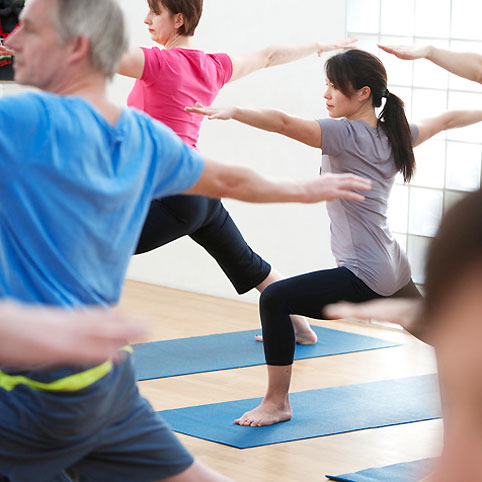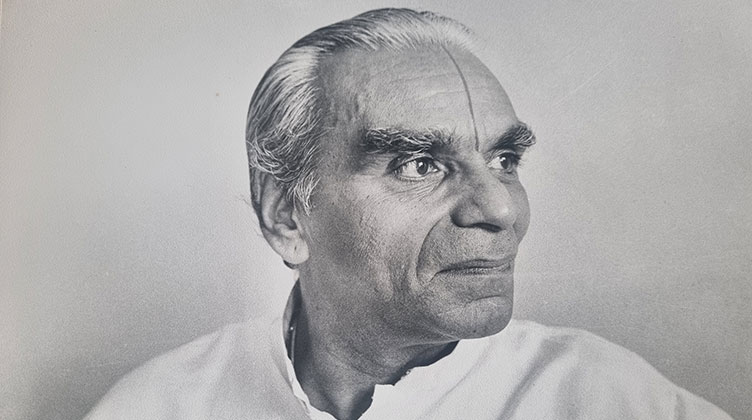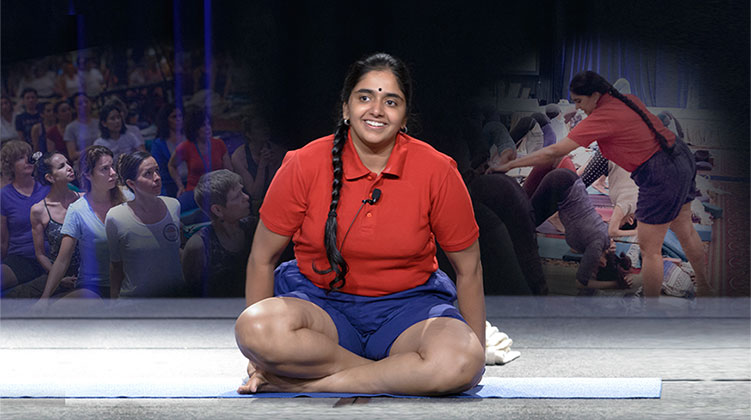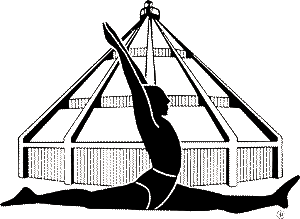
Uday Bhosale spent fifteen years studying, assisting and teaching at the Ramamani Iyengar Memorial Yoga Institute in Pune with the Iyengar family. In addition to teaching the Childrens, Beginners and Intermediate classes at RIMYI, he assisted in Geeta Iyengar’s medical classes. He recently moved to the UK and teaches regular classes and workshops.
How old were you when you started Yoga and when did you start teaching?
In 1993 a close friend and I decided to learn martial arts so I started practising yoga as part of my martial arts training. My Tae Kwon Do master, Ali Dashti, who was also my first yoga teacher at the Institute, introduced us to the field of yoga. Gradually the interest in yoga overtook my interest in martial arts and in 1998, aged eighteen, I enrolled in classes at the Ramamani Iyengar Memorial Institute. I was fortunate to attend the 2002 teacher training course at R.I.M.Y.I. After that I began to assist and then to teach on my own.
How did you get into teaching children?
After the teacher training I was asked to assist in the children’s class, which is conducted every Sunday morning. Until then I was helping in Geetaji’s classes and medical classes, but then Guruji told me to see Pandu (the secretary of R.I.M.Y.I.) and ask him to find me a class to teach. This is how I came to assist in the children’s class on Sundays. The energy and cheerful atmosphere of the class was so attractive. I started teaching smaller groups within the kids’ class and soon I was jumping and shouting aloud in front of 120 plus children!
What do you like about teaching children?
Teaching children is an inspiring challenge. They can be brutally honest about their likes and dislikes. If you succeed in impressing them, they immediately grow fond of you and are ready to learn from you. And if not, they will clearly express their dislike and disinterest right there in your face. With children you have to be innovative and have interesting ideas to catch their attention and hold it. As a teacher for children, we have to quickly see if they are getting bored with repetition or if they are getting tired. If so, one has to change the course of the class instantly.
It is a fantastic opportunity for us teachers to cultivate some positive habits or thoughts, which remain with them for life. Yama and Niyama can be taught with the help of some interesting stories which can shape the character of the child and his/her behaviour. It is like you have access to fresh, raw, wet clay that you can shape into something beautiful. Once you teach them these concepts it is interesting to hear the stories they have to tell about how they followed Yamas and Niyamas in their everyday lives. I find that teaching children is much more exhausting, but far more lively and satisfying.
“I realise how privileged and lucky I was to spend so much time at R.I.M.Y.I. and learn from great teachers like Guruji, Geetaji and Prashantji. Now since Guruji’s demise, I feel it is a responsibility for all of us to continue practising on the lines he has shown us and to continue to grow.”
Uday Bhosale
You were an important member of the organising committee of both Yoganusasanam 2014 and 2015. Are there any impressions you would like to share with us?
I feel quite lucky and honoured to be part of the organising committee for such a huge event. In 2014 it was a big event within just four months of Guruji ‘s passing. Guruji had expressed his wish and desire to hold this event and because of Geetaji’s devotion towards her father, she gave us the go ahead signal for the arrangements of the event. All the volunteers had a deep motivation as this was Guruji’s wish and we were grateful to be a part of fulfilling it. With Geetaji’s teaching, the event was sure to be a hit, all we had to do was execute the peripheral tasks.
At times we hit roadblocks, but with Guruji’s grace things kept falling into place. The ten day long event began and we cruised through it with a mix of emotions as we were excited about Geetaji’s teachings, but also had moments of sorrow when memories of Guruji were shared. Everyone missed him. Geetaji, as the marvellous teacher she is, continued to amaze us day after day. It was a once in a lifetime experience and has provided me with many fond memories as well as dear friends within India and from all over the world.
Last year in 2015 things were different as we had the previous experience from 2014, but at the same time a benchmark to meet. The team of volunteers were as enthusiastic and hardworking as ever. We were happy to see a similar number of people enrolling and attending. It was not surprising that the highlight was the way Geetaji gained momentum over the days. She was unwell, but only outside the class, once on stage she just surprised everyone with her energy and went on teaching for many hours.
You are now teaching in the UK. How does it differ from teaching at the Institute in Pune?
Though the teaching remains the same, I feel there is a great deal of difference in teaching at R.I.M.Y.I. and over here. The basic difference is that at R.I.M.Y.I. students enrol for an academic year. The students attend specifically allocated classes every week. Over here in the UK some places follow a term pattern. Given the space restrictions in Pune the number of students that can be admitted is limited, therefore, a student has to show a lot of perseverance to be able to continue and hence it is much more difficult in the beginning.
A beginner here in the UK takes time and as a teacher you have to impress and win his/her confidence. In Pune we are lucky to have had Guruji, his children and other highly experienced teachers teaching at the R.I.Y.M.I. so attending classes regularly means we learned directly from the source.
In the UK there is a strong workshop culture, which comes about that teachers return from Pune and spread their knowledge this way. This is always a tricky proposition because a teacher has to teach something within a limited period of time to a group of participants with varying degrees of ability and receptivity. Initially this felt like a big task for me. I was worried, how to make students last for 5-6 hours in a day and not burn them out. Gradually I have become adapted to this idea now.
How do you think you can carry on Guruji’s legacy in teaching outside India?
As much as it is an honour to be asked this question, I feel it is a big responsibility too. Guruji’s amazing amount of work and his scale of reach was phenomenal. I realise how privileged and lucky I was to spend so much time at R.I.M.Y.I. and learn from great teachers like Guruji, Geetaji and Prashantji. Now since Guruji’s demise, I feel it is a responsibility for all of us to continue practising on the lines he has shown us and to continue to grow.
He and his children have done a great deal of work to present the subject by writing books, videos and audios. I feel, as teachers, we have the responsibility to keep it alive and present it for newer generations to witness its uniqueness and wonder. With whatever capacity and personal ability, I feel responsible to share the learning that I received and continue it, while feeling gratitude for the Iyengar family’s teaching and blessings.
See Uday’s website for information about his teaching schedule >
This interview first appeared in the 2016 issue of the Iyengar yoga Institute Maida Vale magazine, Dipika.
Blog categories
Become a member
Join our community to get reduced class prices, early booking for events and workshops plus access to the studio for self practice.
Recent news and articles
Iyengar Yoga Home Practice Videos with Raya Uma Datta
27 March 2025|
B.K.S. Iyengar’s visits to Ann Arbor, Michigan
20 March 2025|
Origins of the Modern Yoga Mat
24 October 2024|













